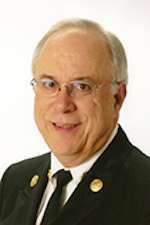Each year, safety professionals are required to complete a defined number of activities, such as training courses, giving technical presentations, performing various workshops, etc. The objective is professional growth. For those of us responsible for fire department safety initiatives, we must keep current and understand not only what is occurring, but what the future may hold.
One excellent opportunity afforded was the second National Fallen Firefighter Line of Duty Death Prevention Summit. Held in March 2007, this initiative collected over 200 fire service leaders to analyze information and develop strategies to further reduce firefighter injuries.
As I sat in the group, waiting to give my presentation, I jotted down some key thoughts. While not comprehensive (nor intended to be), this is what I heard as key considerations for enhancing safety in the fire service. Let's ask some fundamental questions - you provide the answer...
1. We work to save lives and property, we preach prevention, so why do we as firefighters • use tobacco products
• use and abuse controlled substances
• not check our blood pressure
• lnot have an annual heath check-up, and
• not become involved in an exercise program
Also, we provide help to others whenever needed, but what about to the firefighters themselves? Health maintenance and effective performance is a shared responsibility, but just like our fire engine and ambulance, if you are not "ready to go" at a moment's notice, you cannot perform to help others.
2. Why don't we use data better to determine loss developing situations and related loss avoidance, loss prevention, and loss reduction techniques. We should
• Create incentives for reporting and make reporting simple,
• Use the firefighter near miss reporting system,
• Have fire service experts, and safety (neutral subject matter) experts analyze the data,
• Tie grant programs to safety reporting and performance, and
• Work with worker compensation and disability insurers to develop appropriate techniques for preventing accidents and injuries as has been developed by major organizations. The National Safety Council advocates the following four measures, in the order of effectiveness and preference. They include:
• Eliminate the hazard from the machine, method, material or plant structure
• Control the hazard by enclosing or guarding it at its source
• Train personnel to be aware of the hazard and to follow safe job procedures to avoid it, and
• Prescribe personal protective equipment for personnel to shield them against the hazard
3. We rush in to save lives and property, why don't we work to drive the codes and mandatory application of sprinklers? If early warning systems and automatic suppression systems are working for the general public where they are applied, why aren't we committing more to making these protection systems part of basic structural infrastructures?
4. Why do we rush in to save lives and property, when we know there is no life saving objective and the extent of fire or damage to a structure is so severe that there is no reward to the risk?
5. Why don't we implement what we know to be safe practices regarding vehicle safety, including:
• eliminating unsafe scenarios in the design process of vehicles
• driving at safe speeds
• using seat belts
• providing new training, periodic refresher training, training when new vehicles are introduced into the fleet, when accidents occur, etc. We know what prevents &bullaccidents, why aren't we making this happen?
6. All firefighters must be empowered to stop unsafe pracitces whenever they are seen. Does your organization empower everyone to stop unsafe practices whenever they are observed? Thinking back to why business and industry implement safety practices, there are four scenarios:
• They are legislated to do it
• The local authority having jurisdiction forces it
• A prior loss points out the need.
• Someone sees the value of the change.
• Military, industry, insurance, and other industries have been using these approaches for years using evidence based, scientific based programs.
All of this translates to learning from other disciplines and scientific sources to culturally change the fire service approach to preventing accidents, injuries, death, and property damage. This should be accomplished by all agencies integrating safety into the daily routine of the organization. Business and industry has done this for years by:
• Rewarding and recognizing safe behavior
• Making everyone accountable for safe daily operations, and
• Making management accountable when losses occur.
Lesson 35: Periodically look outside your organization and discipline to see how safety problems are solved by others in the fire service and outside the fire services so learn from experts in solving your problems and concerns.
Safety 101 - A series from the technical and administrative perspective, designed to help you reduce emergency responder injuries, illnesses, property loss and death!
DR. WILLIAM F. JENAWAY, CSP, CFO, CFPS, a Firehouse.com Contributing Editor, is Executive Vice President of VFIS and has over 30 years experience in safety and risk management in the insurance industry. He was named "Volunteer Fire Chief of the Year" as Chief of the King of Prussia, PA, Volunteer Fire Company, and is the author the text Emergency Service Risk Management.

William Jenaway | Firehouse.Com Contributor
Dr. William F. Jenaway, CFO, CFPS has over 40 years of fire service experience, including fire chief in East Bethlehem Township and chief of the King of Prussia, Pa., Volunteer Fire Company. Bill holds the CFO and CTO designations and he holds A.S., B.S., M.A. and Ph.D. degrees. Bill is an adjunct professor in the public safety graduate school at St. Joseph's University in Philadelphia, and in the legal studies graduate school at California University of Pennsylvania. In 2001, he was named "Volunteer Fire Chief of the Year" by Fire Chief magazine.





